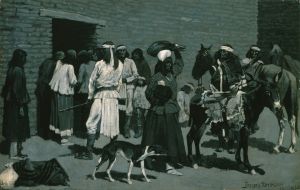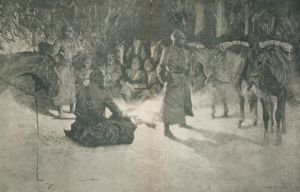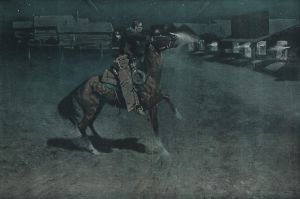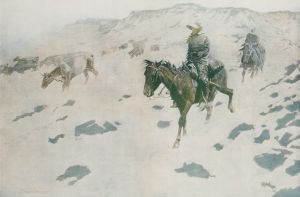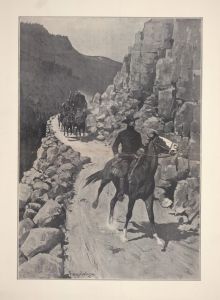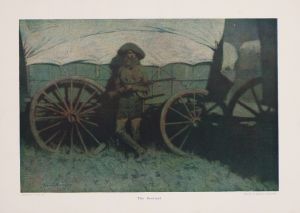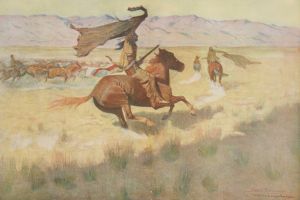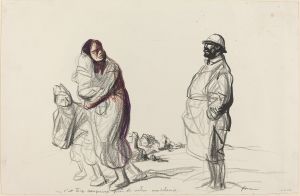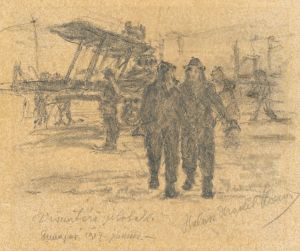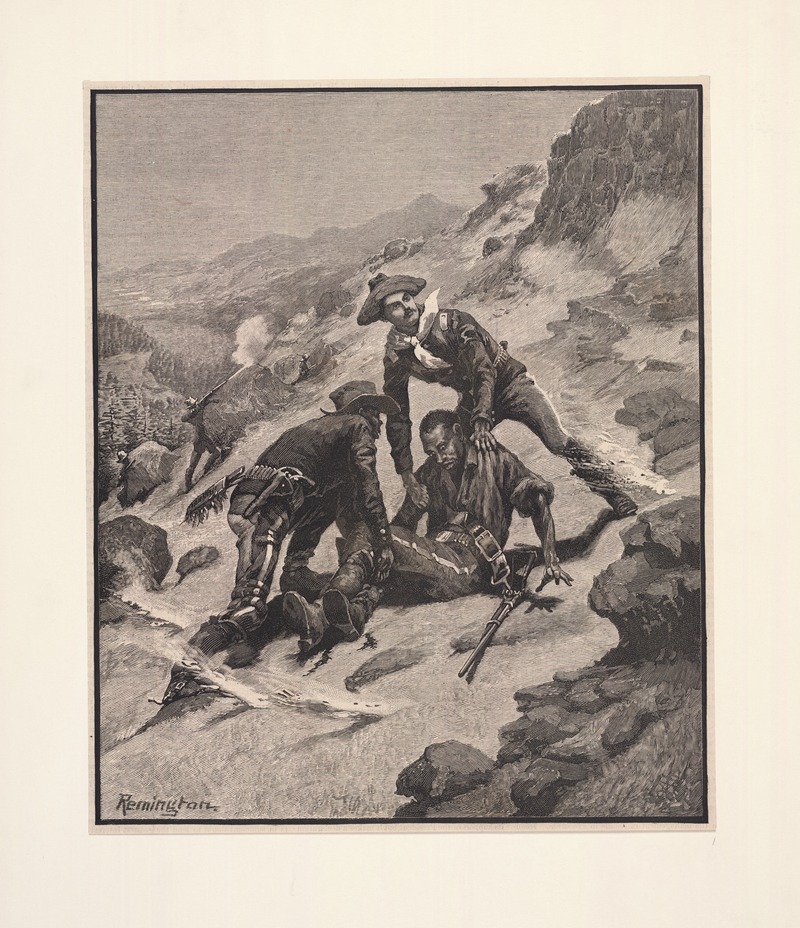
Soldiering in the Southwest–The Rescue of Corporal Scott
A hand-painted replica of Frederic Remington’s masterpiece Soldiering in the Southwest–The Rescue of Corporal Scott, meticulously crafted by professional artists to capture the true essence of the original. Each piece is created with museum-quality canvas and rare mineral pigments, carefully painted by experienced artists with delicate brushstrokes and rich, layered colors to perfectly recreate the texture of the original artwork. Unlike machine-printed reproductions, this hand-painted version brings the painting to life, infused with the artist’s emotions and skill in every stroke. Whether for personal collection or home decoration, it instantly elevates the artistic atmosphere of any space.
"Soldiering in the Southwest–The Rescue of Corporal Scott" is a painting by the renowned American artist Frederic Remington, who is celebrated for his depictions of the American West. Remington's work is known for its vivid portrayal of the life and struggles of soldiers, cowboys, and Native Americans during the late 19th and early 20th centuries. This particular painting is one of his many works that capture the essence of military life in the challenging environment of the American Southwest.
Frederic Remington was born on October 4, 1861, in Canton, New York, and he developed a fascination with the American frontier from a young age. His artistic career began in earnest in the 1880s, and he quickly became known for his illustrations and paintings that depicted the rugged and often romanticized life of the West. Remington's works were widely published in magazines such as Harper's Weekly, which helped to cement his reputation as a leading artist of Western themes.
"Soldiering in the Southwest–The Rescue of Corporal Scott" is a testament to Remington's ability to convey dramatic narratives through his art. The painting depicts a scene of military action, focusing on the rescue of a soldier named Corporal Scott. The setting is the arid and challenging landscape of the American Southwest, a region that was a frequent subject of Remington's work due to its dramatic scenery and historical significance as a site of conflict and exploration.
In this painting, Remington captures the urgency and peril of a rescue mission. The composition likely includes soldiers on horseback, a common motif in Remington's art, which emphasizes the mobility and resilience required of troops operating in such a harsh environment. The artist's attention to detail in the depiction of uniforms, equipment, and the physical exertion of the figures adds to the authenticity and intensity of the scene.
Remington's use of color and light in "Soldiering in the Southwest–The Rescue of Corporal Scott" would typically reflect his mastery in creating atmospheric effects that enhance the narrative. His palette often included earthy tones that mirrored the natural landscape of the Southwest, while his handling of light could convey the time of day and the mood of the scene, whether it be the harsh midday sun or the softer glow of dusk.
The painting is an example of Remington's broader body of work that not only entertained but also informed the public about the realities of frontier life. His art played a significant role in shaping the popular image of the American West during his time and continues to influence perceptions today.
While specific details about the historical context or inspiration behind "Soldiering in the Southwest–The Rescue of Corporal Scott" are not extensively documented, the painting remains an important piece within Remington's oeuvre. It exemplifies his skill in storytelling through visual art and his commitment to capturing the spirit of the American frontier.
Frederic Remington's legacy as an artist is enduring, and his works are held in high regard by collectors and institutions alike. His paintings, including "Soldiering in the Southwest–The Rescue of Corporal Scott," continue to be celebrated for their dynamic compositions, historical significance, and their ability to transport viewers to a pivotal era in American history.





